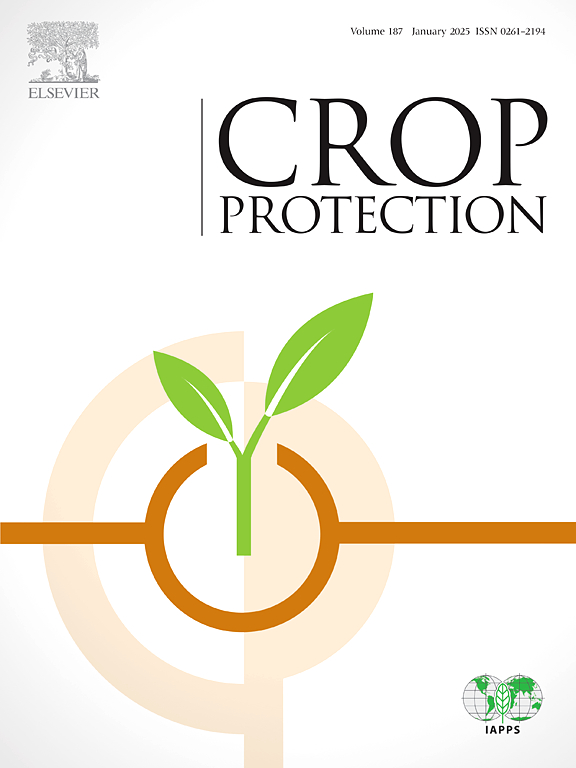Occurrence and dynamics of resistance to a QoI and a DMI fungicide in Erysiphe necator the causal agent of grape powdery mildew in Israel
IF 2.5
2区 农林科学
Q1 AGRONOMY
引用次数: 0
Abstract
Powdery mildew incited by the fungus Erysiphe necator is a destructive disease of grapes in Israel and elsewhere, attacking green parts of the vine and reducing yield and wine quality. Demethylation inhibitors (DMI) and quinone outside inhibitors (QoI) fungicides are frequently used to control the disease. However, starting in 2005 and 2007, respectively, we observed reduced control efficacy of DMI and QoI fungicides in Israel. The resistance of E. necator to DMI or QoI has not been phenotypically described or genetically characterized in the Middle Eastern region, and the seasonal dynamics of resistance have been under-studied worldwide. Field experiments performed during 2017 and 2018 in the Judean-foothills and Upper Galilee regions, showed reduced efficacy of both fungicides. Sensitivity of E. necator to the fungicides was determined in grape leaf disks bioassays. Isolates collected from sprayed plots exhibited EC50 values of 100–1000 and 2–8 μg/mL for QoI and DMI, respectively, while isolates collected from non-sprayed vines showed EC50 values of 0.5–1.6 and 0.04–1.8 μg/mL, respectively. Resistant isolates carried the genetic mutations to DMI (Y136F) and QoI (G143A). We conclude that the recently reduced control efficacy of the disease in Israeli vineyards resulted from fungicide resistance. Seasonal dynamics of DMI and QoI mutant isolates in the vineyards were different. The proportion of QoI mutant isolates increased and became dominant by mid and late season, while DMI mutant isolates dominated mid-season, and DMI-wild-type isolates dominated at the beginning and end of the season when selection pressure was low.
求助全文
约1分钟内获得全文
求助全文
来源期刊

Crop Protection
农林科学-农艺学
CiteScore
6.10
自引率
3.60%
发文量
200
审稿时长
29 days
期刊介绍:
The Editors of Crop Protection especially welcome papers describing an interdisciplinary approach showing how different control strategies can be integrated into practical pest management programs, covering high and low input agricultural systems worldwide. Crop Protection particularly emphasizes the practical aspects of control in the field and for protected crops, and includes work which may lead in the near future to more effective control. The journal does not duplicate the many existing excellent biological science journals, which deal mainly with the more fundamental aspects of plant pathology, applied zoology and weed science. Crop Protection covers all practical aspects of pest, disease and weed control, including the following topics:
-Abiotic damage-
Agronomic control methods-
Assessment of pest and disease damage-
Molecular methods for the detection and assessment of pests and diseases-
Biological control-
Biorational pesticides-
Control of animal pests of world crops-
Control of diseases of crop plants caused by microorganisms-
Control of weeds and integrated management-
Economic considerations-
Effects of plant growth regulators-
Environmental benefits of reduced pesticide use-
Environmental effects of pesticides-
Epidemiology of pests and diseases in relation to control-
GM Crops, and genetic engineering applications-
Importance and control of postharvest crop losses-
Integrated control-
Interrelationships and compatibility among different control strategies-
Invasive species as they relate to implications for crop protection-
Pesticide application methods-
Pest management-
Phytobiomes for pest and disease control-
Resistance management-
Sampling and monitoring schemes for diseases, nematodes, pests and weeds.
 求助内容:
求助内容: 应助结果提醒方式:
应助结果提醒方式:


